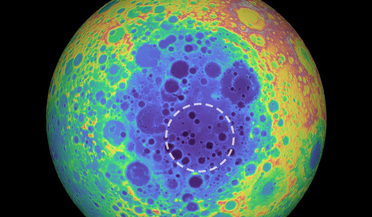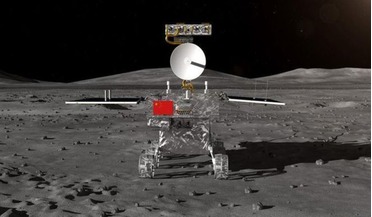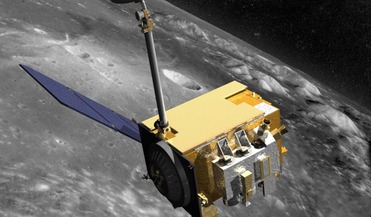 12 June 2019
Mysterious mass found under Moon's South Pole
12 June 2019
Mysterious mass found under Moon's South Pole
..., even the researchers cannot fully explain how such a layer formed here and nowhere else. The South Pole–Aitken basin is however "one of the best natural laboratories for studying catastrophic impact events” said James, due to its...
 10 December 2018
First far side of the Moon mission underway
10 December 2018
First far side of the Moon mission underway
... that monopolises the far side's landscape is the South Pole-Aitken basin. Formed via a cataclysmic impact rather than by volcanism...six times as deep as the Grand Canyon. Because of the basin's great size, the crust is expected to be thinner than...
 03 January 2019
Chinese goddess lands on far side of the Moon
03 January 2019
Chinese goddess lands on far side of the Moon
.... Chang'e 4 is named after the Chinese goddess of the Moon and its mission is to take detailed measurements of the South Pole-Aitken basin, an impact site over 1,553 miles across that exposes the deepest parts of the lunar crust. This...
 27 March 2020
Mercury's crust could have had episodic habitable conditions, new study says
27 March 2020
Mercury's crust could have had episodic habitable conditions, new study says
... have still played a part in shaping Mercury’s terrain,” writes Rodriguez and colleagues. The South Pole-Aitken basin, the largest, oldest, and deepest basin recognised on the Moon, is thought to have led to an epoch of volcanic activity, so it could...
 January 2017
Blueprint for NASA’s journey to Mars
January 2017
Blueprint for NASA’s journey to Mars
...systems and protocols prior to their use at Mars. In particular, the return of lunar samples from the south pole Aitken Basin meshes the accomplishment of a key Decadal Survey science objective with the complementary development of cis-lunar and ...
 03 July 2020
More metal on the Moon than previously thought, new study suggests
03 July 2020
More metal on the Moon than previously thought, new study suggests
... Laboratory (GRAIL) mission which found an anomalous and significant mass of dense material beneath the Moon's huge South Pole-Aitken basin. The mysterious mass which is presumed to be metallic in nature and is five times larger than the Big Island...